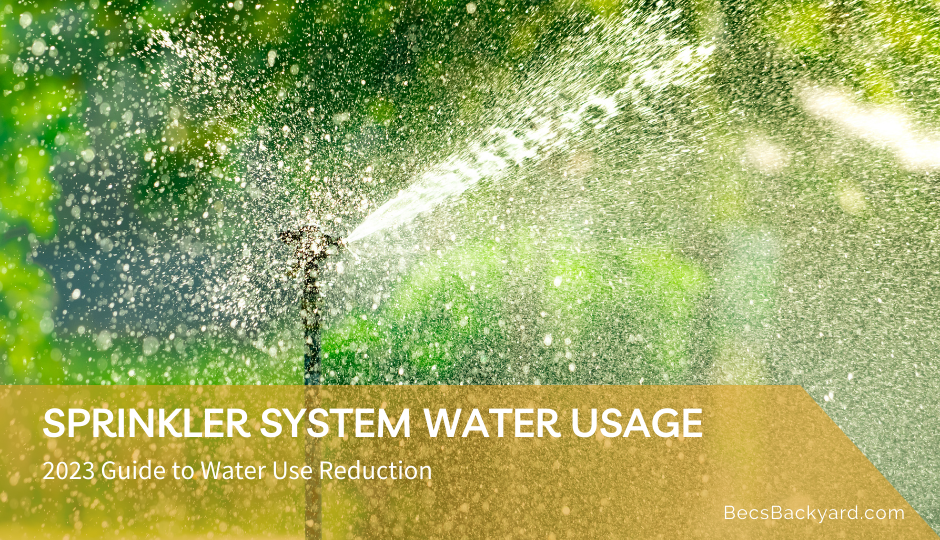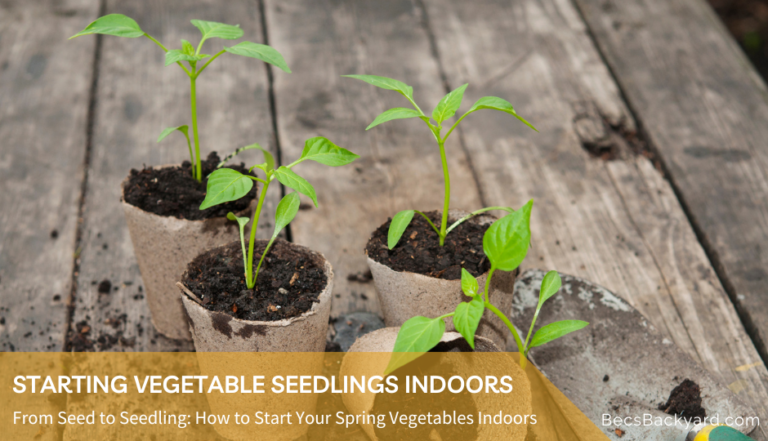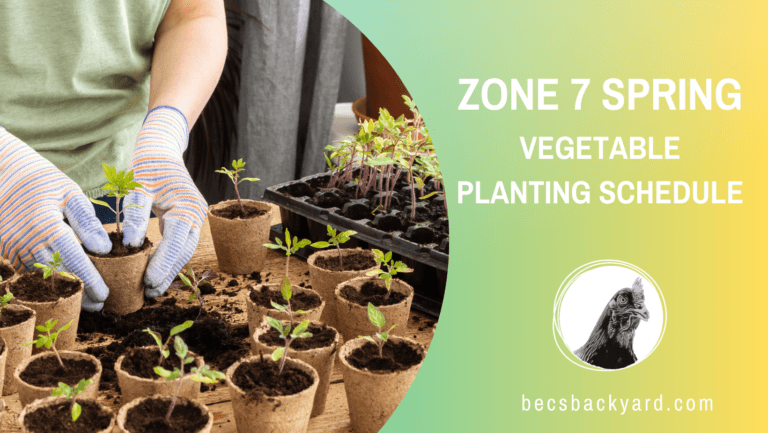Sprinkler System Water Usage Revealed

In today’s world, where water scarcity is becoming a growing concern, it is essential to understand the water usage of various systems and appliances in our homes. One such system that consumes a significant amount of water is a sprinkler system. Whether you have a sprinkler system installed in your garden or are considering getting one, it is crucial to know how much water it uses and the potential impact it can have on your water bills and the environment.
This article aims to provide you with surprising facts about sprinkler system water usage in 2023. By understanding the average water consumption of sprinkler systems and the factors that affect it, you can make informed decisions about water conservation and reducing your water usage.
Water conservation is of utmost importance, especially in regions where water resources are limited. By conserving water, we can ensure its availability for future generations and minimize the strain on our environment. Sprinkler systems play a significant role in maintaining the health and beauty of our gardens, but they can also contribute to excessive water consumption if not used efficiently.
Factors such as the size of your garden, the type of sprinkler system you have, the weather conditions, and the watering schedule can all affect the amount of water used by your sprinkler system. Understanding these factors can help you optimize your water usage and reduce any unnecessary waste.
By knowing the average water consumption of sprinkler systems, you can also estimate the impact on your water bills. This knowledge can help you budget and plan accordingly, ensuring that you are not surprised by high water bills.
Furthermore, it is essential to consider the environmental impact of excessive water usage. Water is a precious resource, and wasting it can have severe consequences for ecosystems and wildlife. By reducing your sprinkler system’s water usage, you can contribute to a more sustainable and eco-friendly environment.
In the following sections of this article, we will delve deeper into the average water consumption of sprinkler systems, their impact on water bills, the environmental implications, and provide tips for reducing water usage. We will also explore future trends in sprinkler system water usage, giving you a glimpse into what the future holds for this essential system.
Understanding the water usage of a sprinkler system is crucial for water conservation and responsible usage. By being aware of the factors that affect water consumption and implementing strategies to reduce usage, we can ensure a sustainable future for our water resources.

Understanding Sprinkler Systems
Sprinkler systems are commonly used for watering lawns, gardens, and other outdoor spaces. They consist of a network of pipes, valves, and sprinkler heads that distribute water evenly across the desired area. Understanding how these systems work is essential in determining their water usage.
There are two main types of sprinkler systems: traditional and smart. Traditional sprinkler systems operate on a timer and distribute water based on a predetermined schedule. They typically have fixed spray patterns and may not be as efficient in water distribution.
On the other hand, smart sprinkler systems use advanced technology to optimize water usage. These systems can adjust watering schedules based on weather conditions, soil moisture levels, and plant needs. They may also have features like rain sensors and soil moisture sensors to prevent overwatering.
The water usage of a sprinkler system depends on several factors. The size of the area being watered, the type of plants or grass being irrigated, and the climate in which the system is installed all play a role in determining water consumption. Additionally, the efficiency of the sprinkler heads and the overall design of the system can impact water usage.
To estimate the water usage of a sprinkler system, it is important to consider the precipitation rate of the sprinkler heads. This refers to the amount of water delivered per unit of time. Different sprinkler heads have different precipitation rates, so it is crucial to choose the right type for the specific needs of the area being watered.
It is also worth noting that overwatering can lead to water waste and potential damage to plants. It is important to find the right balance between providing enough water for healthy plant growth and avoiding excessive water usage.
Understanding how sprinkler systems work and the factors that affect their water usage is crucial for efficient water management. By choosing the right type of sprinkler system, optimizing watering schedules, and considering the specific needs of the area being watered, it is possible to minimize water consumption while still maintaining healthy and vibrant outdoor spaces.
Importance of Water Conservation
Water conservation is a crucial aspect to consider when it comes to the usage of sprinkler systems. As the demand for water continues to increase, it is essential to understand the importance of conserving this precious resource.
One of the primary reasons why water conservation is important is to ensure the sustainability of our water supply. With the growing population and increasing water needs, it is crucial to use water efficiently and avoid wastage. By conserving water, we can help ensure that there is enough water available for future generations.
Another reason why water conservation is important is the impact it has on our environment. Excessive water usage can lead to the depletion of water sources such as rivers, lakes, and underground aquifers. This can have severe consequences for ecosystems and wildlife that depend on these water sources for their survival. By using sprinkler systems responsibly and minimizing water usage, we can help protect these natural habitats and preserve biodiversity.
Water conservation also has financial benefits. By reducing water consumption, homeowners can significantly lower their water bills. Sprinkler systems that use excessive amounts of water can lead to skyrocketing water bills, especially during the hot summer months when irrigation needs are high. By implementing water-saving practices and using efficient sprinkler systems, homeowners can save money and reduce their overall water expenses.
There are several ways to promote water conservation when using a sprinkler system. One effective method is to ensure that the sprinkler system is properly maintained and regularly inspected for leaks or malfunctions. A well-maintained system will operate efficiently and minimize water wastage.
Additionally, homeowners can consider using smart irrigation technologies that adjust watering schedules based on weather conditions and soil moisture levels. These technologies can help optimize water usage and prevent overwatering.
Water conservation is of utmost importance when it comes to the usage of sprinkler systems. By understanding the significance of conserving water, homeowners can make informed decisions about their irrigation practices. Implementing water-saving measures not only benefits the environment but also helps save money on water bills. With the increasing demand for water, it is crucial that we all play our part in conserving this valuable resource for future generations.
Factors Affecting Water Usage
When it comes to understanding the amount of water consumed by a sprinkler system, there are several factors that can affect water usage. These factors can vary depending on the type of sprinkler system, the size of the area being watered, and the specific needs of the plants or lawn being irrigated.
One of the main factors that can affect water usage is the type of sprinkler system being used. There are different types of sprinkler systems available, including fixed spray, rotary, and drip irrigation systems. Each of these systems has its own water usage characteristics. For example, fixed spray systems typically have a higher water usage rate compared to rotary or drip irrigation systems.
The size of the area being watered is another important factor to consider. Larger areas will generally require more water to adequately irrigate the entire space. Additionally, the type of plants or lawn being watered can also impact water usage. Some plants may require more water than others, and certain types of grass may have higher water needs.
Another factor that can affect water usage is the duration and frequency of watering. Some sprinkler systems have timers that allow users to set specific watering schedules. The duration and frequency of watering can be adjusted based on factors such as weather conditions, soil type, and plant needs. By optimizing the watering schedule, it is possible to reduce water usage while still maintaining healthy plants and lawns.
Additionally, the efficiency of the sprinkler system itself can impact water usage. Older or poorly maintained sprinkler systems may have leaks or other issues that can result in water wastage. Regular maintenance and inspections can help identify and address any inefficiencies in the system, ultimately reducing water usage.
Overall, understanding the factors that affect water usage in a sprinkler system is crucial for making informed decisions about water conservation. By considering factors such as the type of system, area size, plant needs, and system efficiency, it is possible to optimize water usage and minimize waste. This not only helps to reduce water bills but also contributes to environmental sustainability.
Average Water Consumption of Sprinkler Systems
One of the key concerns for homeowners and property owners when it comes to sprinkler systems is the amount of water they consume. Understanding the average water consumption of sprinkler systems is crucial for managing water usage effectively and making informed decisions about irrigation practices.
The average water consumption of a sprinkler system can vary depending on several factors. These factors include the size of the area being irrigated, the type of sprinkler heads used, the duration and frequency of watering, and the efficiency of the system.
In general, sprinkler systems can use anywhere from 1,000 to 3,000 gallons of water per hour. This means that if you run your sprinkler system for an hour, you could be using up to 3,000 gallons of water. However, it’s important to note that this is just an average estimate and the actual water consumption can vary.
The type of sprinkler heads used in the system can significantly impact water consumption. Some sprinkler heads are designed to deliver water in a fine mist, while others produce larger droplets. Sprinkler heads that produce larger droplets are generally more efficient as they are less affected by wind and evaporation. This means that they require less water to achieve the same level of irrigation.
Another factor that affects water consumption is the duration and frequency of watering. If you water your lawn for longer periods or more frequently than necessary, you will end up using more water. It’s important to find the right balance and water your lawn only when needed.
Efficiency is also a crucial factor in determining water consumption. Older sprinkler systems may not be as efficient as newer models, leading to higher water usage. Regular maintenance and upgrades can help improve the efficiency of your sprinkler system and reduce water consumption.
By understanding the average water consumption of sprinkler systems and considering the factors that affect it, homeowners and property owners can make informed decisions about their irrigation practices. This knowledge can help them manage water usage effectively, reduce water bills, and contribute to water conservation efforts.
Impact on Water Bills
One of the key concerns for homeowners when it comes to using a sprinkler system is the potential impact on their water bills. Understanding how much water a sprinkler system uses can help homeowners make informed decisions about their water usage and budget accordingly.
The amount of water consumed by a sprinkler system can vary depending on several factors. These factors include the size of the lawn or garden being watered, the type of sprinkler heads used, the duration and frequency of watering, and the efficiency of the system.
On average, a sprinkler system can use between 1,000 and 3,000 gallons of water per hour. This means that if you run your sprinkler system for an hour, you could be using anywhere from 1,000 to 3,000 gallons of water. Over time, this can add up and significantly impact your water bills.
To get a more accurate estimate of how much water your sprinkler system is using, you can install a water flow meter. This device measures the amount of water flowing through your sprinkler system and can provide you with real-time data on your water usage. By monitoring your water usage, you can make adjustments to your watering schedule or system settings to reduce water consumption and save money on your water bills.
In addition to the direct impact on water bills, excessive water usage from sprinkler systems can also strain local water resources and contribute to water scarcity. This is particularly important in areas with limited water supply or during drought conditions. By understanding the impact of your sprinkler system on water bills, you can also contribute to water conservation efforts and help protect the environment.
To reduce water usage and minimize the impact on your water bills, there are several tips you can follow. These include adjusting your sprinkler system settings to avoid overwatering, watering during the early morning or late evening to minimize evaporation, and regularly maintaining your sprinkler system to ensure it is working efficiently.
Understanding the impact of a sprinkler system on water bills is crucial for homeowners. By knowing how much water your system uses and implementing water-saving strategies, you can reduce water consumption, save money, and contribute to water conservation efforts.
Environmental Impact
When it comes to the environmental impact of sprinkler system water usage, there are several factors to consider. The excessive use of water can have negative consequences on both the local ecosystem and the larger environment.
One of the main concerns is the depletion of water resources. In areas where water is scarce or in times of drought, the excessive use of water by sprinkler systems can put a strain on the available water supply. This can lead to water shortages for other important uses such as drinking water, agriculture, and wildlife habitats.
Additionally, the runoff from sprinkler systems can contribute to water pollution. As the water from the sprinklers flows over lawns and gardens, it can pick up various pollutants such as fertilizers, pesticides, and herbicides. This contaminated water then enters storm drains and eventually makes its way into rivers, lakes, and other bodies of water. This can have detrimental effects on aquatic ecosystems, leading to the death of fish and other aquatic organisms.
Furthermore, the energy consumption associated with operating sprinkler systems can also have an environmental impact. Many sprinkler systems are powered by electricity, which is often generated from non-renewable sources such as coal or natural gas. The production of electricity from these sources releases greenhouse gasses into the atmosphere, contributing to climate change.
To mitigate the environmental impact of sprinkler system water usage, there are several steps that can be taken. One option is to invest in more efficient sprinkler systems that use water more effectively and minimize wastage. This can include technologies such as smart controllers that adjust watering schedules based on weather conditions and soil moisture levels.
Another approach is to incorporate water-saving practices into landscaping and gardening. This can include using native plants that require less water, mulching to retain moisture in the soil, and implementing drip irrigation systems that deliver water directly to the roots of plants.
The environmental impact of sprinkler system water usage is significant and should not be overlooked. By understanding the factors affecting water usage, implementing water-saving practices, and investing in more efficient sprinkler systems, we can reduce our impact on the environment and contribute to water conservation efforts.
Tips for Reducing Water Usage
Water conservation is an important aspect of using a sprinkler system, as excessive water usage can not only lead to higher water bills but also have a negative impact on the environment. In this section, we will discuss some tips and strategies for reducing water usage while still maintaining an effective sprinkler system.
1. Adjust the watering schedule:
One of the simplest ways to reduce water usage is to adjust the watering schedule of your sprinkler system. By watering during the early morning or late evening, when temperatures are cooler and evaporation rates are lower, you can ensure that more water reaches the plants and less is wasted.
2. Install a rain sensor:
A rain sensor is a device that detects rainfall and automatically shuts off the sprinkler system when it is not necessary. This prevents overwatering and saves water by utilizing natural precipitation.
3. Use smart irrigation technology:
Smart irrigation systems use weather data and soil moisture sensors to determine when and how much water to apply. By using this technology, you can ensure that your sprinkler system only operates when needed, reducing water waste.
4. Group plants with similar water needs:
Another effective strategy is to group plants with similar water needs together. This allows you to water them more efficiently, as you can adjust the sprinkler system to meet the requirements of the entire group rather than individual plants.
5. Regularly maintain and inspect your sprinkler system:
A well-maintained sprinkler system is more efficient and less likely to waste water. Regularly check for leaks, clogged nozzles, or misaligned sprinkler heads, and promptly repair any issues to ensure optimal water usage.
6. Consider alternative irrigation methods:
Depending on your landscape and plant types, you may want to explore alternative irrigation methods such as drip irrigation or soaker hoses. These methods deliver water directly to the roots, minimizing evaporation and water waste.
By implementing these tips and strategies, you can significantly reduce the water usage of your sprinkler system without compromising the health and beauty of your landscape. Not only will this help you save money on your water bills, but it will also contribute to the conservation of this precious resource and minimize the environmental impact of your sprinkler system.
Future Trends in Sprinkler System Water Usage
In recent years, there has been a growing concern about water conservation and the need to reduce water usage. This has led to advancements in sprinkler system technology and a shift towards more efficient and sustainable water usage. In heading IX, we will explore the future trends in sprinkler system water usage and how they can contribute to water conservation efforts.
One of the key trends in sprinkler system water usage is the adoption of smart irrigation technology. Smart irrigation systems use sensors and weather data to determine the optimal amount of water needed for a specific area. By adjusting the watering schedule based on real-time conditions, these systems can significantly reduce water waste. They can also be programmed to avoid watering during rainy periods or when the soil is already moist, further conserving water.
Another trend is the use of drip irrigation systems. Unlike traditional sprinkler systems that spray water over a large area, drip irrigation systems deliver water directly to the roots of plants through a network of tubes and emitters. This targeted approach minimizes water loss due to evaporation and ensures that plants receive the right amount of water they need. Drip irrigation systems are particularly beneficial for gardens, flower beds, and areas with dense vegetation.
Furthermore, there is a growing interest in using recycled or reclaimed water for irrigation purposes. This involves treating wastewater or capturing rainwater and using it for irrigation instead of relying solely on freshwater sources. By utilizing alternative water sources, sprinkler systems can reduce their reliance on potable water and contribute to water conservation efforts.
Additionally, advancements in sprinkler system design and nozzle technology are also expected to play a role in reducing water usage. Newer sprinkler heads are designed to deliver water more efficiently, with better distribution patterns and reduced overspray. These improvements help to minimize water waste and ensure that water is delivered precisely where it is needed.
The future trends in sprinkler system water usage are focused on improving efficiency, reducing waste, and promoting water conservation. The adoption of smart irrigation technology, drip irrigation systems, the use of recycled water, and advancements in sprinkler system design all contribute to these efforts. By embracing these trends, homeowners and businesses can not only reduce their water bills but also contribute to the sustainability of our water resources.
Conclusion
In conclusion, understanding the water usage of a sprinkler system is crucial for both homeowners and the environment. As we have discussed throughout this article, sprinkler systems can consume a significant amount of water, which can have a direct impact on water bills and the environment.
It is important to note that the average water consumption of a sprinkler system can vary depending on various factors such as the size of the lawn, the type of sprinkler system, and the climate. However, it is estimated that a typical sprinkler system can use anywhere from 1,000 to 3,000 gallons of water per hour of operation.
This level of water consumption can lead to higher water bills, especially during the hot summer months when lawns require more frequent watering. Therefore, it is essential for homeowners to be mindful of their sprinkler system usage and find ways to reduce water consumption.
Additionally, the environmental impact of excessive water usage cannot be ignored. Water is a precious resource, and using it inefficiently can contribute to water scarcity and environmental degradation. By reducing water usage, homeowners can contribute to water conservation efforts and help protect the environment.
To reduce water usage, there are several tips that homeowners can follow. These include adjusting sprinkler settings to avoid overwatering, using smart irrigation controllers that adjust watering schedules based on weather conditions, and incorporating drought-tolerant plants into the landscape.
Looking towards the future, there is a growing trend towards more water-efficient sprinkler systems. Manufacturers are developing innovative technologies that can help reduce water consumption while still maintaining healthy lawns. These advancements, coupled with increased awareness about water conservation, can lead to a more sustainable approach to sprinkler system water usage.
Understanding the water usage of a sprinkler system is essential for homeowners to make informed decisions about their water consumption and its impact on their bills and the environment. By implementing water-saving strategies and adopting more efficient sprinkler systems, we can all contribute to a more sustainable future.






